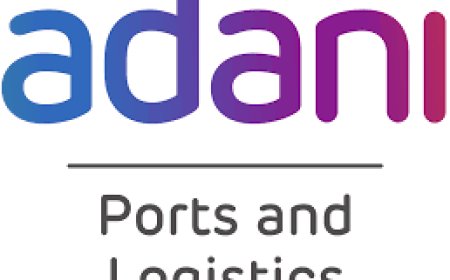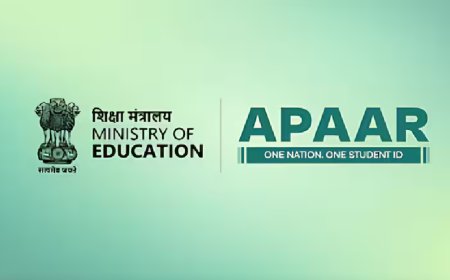Gujarat’s State Board: Tradition and Triumph in Schooling

Gujarat’s State Board: Tradition and Triumph in Schooling
Despite being viewed by some as old-fashioned or overly exam-focused, Gujarat’s state-run secondary board (GSHSEB/GSEB) has quietly underpinned the success of many of India’s brightest students and entrepreneurs. The board’s rigorous syllabus and exam system – while long and demanding – builds strong academic foundations. High pass rates in recent state exams (around 93% in the general stream and 83.5% in science, for example) show that students master the material. In Gujarat’s classrooms, core subjects are taught thoroughly (often in Gujarati), and students must complete a full year’s curriculum before final exams. This structured, disciplined approach ensures a deep grasp of basics. Indeed, Forbes India notes that the Gujarati business community prizes “ethics, collaboration, adaptability, long-term vision and community” – the very values that good education aims to instill. In other words, Gujarat board schools blend academic rigor with character-building, an education philosophy aligned with both traditional values and modern success.
Local Culture and Language in the Classroom
A Gujarati-medium computer class in Ahmedabad. Teaching in the mother tongue and using local examples helps ground students in their community and culture. Gujarat board textbooks often weave regional history, literature and ethics into lessons, giving students a strong sense of identity alongside academic knowledge. Research shows children learn best in a familiar language, and Gujarat’s schools use this advantage. Students at renowned Ahmedabad institutions like Sheth C.N. Vidyalaya (a historic GSHEB school) learn not only mathematics and science, but also lessons from Gujarati culture. As one regional article notes, “Gujarati medium schools…are known for producing successful individuals proud of their cultural identity” who later thrive in business. By studying in Gujarati and engaging with local issues, students build communication skills and local networks that often prove valuable in Gujarat’s business world. The board’s emphasis on community, discipline and traditional values (honesty, service, hard work) further shapes young minds – an ethos Forbes analysts say “resonate[s] harmoniously” with modern ideas of leadership and citizenship. In effect, the Gujarat board education fuses global academic fundamentals with home-grown cultural roots.
Gujarat’s Entrepreneurial Ecosystem
Gujarat as a state has long been known for its entrepreneurial spirit – and its schools reflect that. A recent Global Entrepreneurship Monitor report found Gujarat ranking among India’s highest in entrepreneurial motivation and risk-taking, noting “social perception for entrepreneurship…is better in Gujarat for traditional reasons”. In practical terms, students grow up hearing stories of family businesses and local tycoons, which schools reinforce through examples in class. For instance, projects or textbooks might highlight Gujarat’s industrial history (textiles, chemicals, agriculture) or include activities on project planning and innovation. In classrooms, students are encouraged to be resourceful and enterprising: many schools have science fairs and so-called “computer classes” (as shown above) that give pupils hands-on tech skills. The board’s recent initiatives – like integrating digital content and aligning with the national education policy – also aim to foster critical thinking and creativity. Overall, Gujarat’s schools do more than lecture; they encourage problem-solving and leadership, qualities essential for starting a business. Thus students often come away not just with book-smarts, but with confidence to launch ventures or lead teams.
Success Stories: Ahmedabad’s Business Leaders
The proof of Gujarat board education’s impact can be seen in its alumni. Many of Ahmedabad’s most famous business leaders were products of the state system. Take Gautam Adani, for example: born and raised in Ahmedabad, he spent his entire school life in local state-system schools. According to reports, he “spent four years completing secondary education” in Ahmedabad under the Gujarat board. He ultimately left school at 16 to work, but that grounding was crucial. In his own words, Adani later reflected on how giving up school at 16 to pursue trading diamonds and then returning to Gujarat to run the family business was a bold leap; yet his early education had given him the discipline and clarity to seize that opportunity. That leap launched what would become the Adani Group, making him one of India’s richest industrialists.
Ahmedabad’s other industrial clans share similar roots. Pankaj Patel, chairman of Zydus Lifesciences, also grew up and studied in Ahmedabad’s Gujarati-medium schools before earning pharmacy degrees. Torrent Group co-chairs Sudhir and Samir Mehta attended local schools in Gujarat before taking over their late father’s pharmaceuticals-and-power empire. These executives often credit their youth in Gujarat for instilling hard work and community values. (Indeed, Ahmedabad schools frequently stress community service and ethics alongside studies.) In short, some of India’s biggest business names – from Cadila Pharma’s Patel family to textile magnate Sanjay Lalbhai– trace their academic beginnings to the Gujarat state board. Their success stories suggest that the board’s focus on foundational learning and values helped launch entrepreneurial careers. Dr. Keyur Parikh, Chairman of Marengo CIMS Hospital is also an example of the same. So are owners of the Vadilal Group - Rajesh Gandhi who also studied in GSEB (St. Xaviers Loyola Hall School). This is the same for Kulin Lalbhai, Aditya Handa and other business owners.
Challenges and Evolution of the Gujarat Board
To be sure, the Gujarat board isn’t without criticism. Some argue that state curricula can be “traditional” or heavy on rote learning, and that Gujarati-medium instruction may limit global exposure. Such concerns have led many parents to switch to national boards (CBSE/ICSE) or supplement classes with private coaching in English. However, even GSHEB has modernized: many Gujarati-medium schools now offer bilingual or English sections, and digital tools are being introduced to make lessons more interactive. Importantly, student outcomes remain strong. The board’s strict system means students often score high marks (even topping district and state exams) – suggesting they build solid exam skills. Moreover, Gujarat’s entrepreneurial ecosystem often compensates for any language gap: local industries and universities are accessible, and many state-board students learn English or IT skills alongside their schooling. In balance, while no system is perfect, Gujarat’s board has continuously evolved (for example, updating textbooks and teaching methods) to better prepare students for the modern world.
Far from holding its students back, Gujarat’s lengthy, values-driven education system has been a springboard for achievement. Its rigorous curriculum and rooted approach provide a stable foundation of knowledge, while Gujarati-medium schools reinforce cultural confidence. In this environment, students grow up seeing business success all around them and are encouraged to aim high. As evidenced by leaders like Gautam Adani and Pankaj Patel, a Gujarat board background can instill the discipline, local insight, and community ethos that fuel entrepreneurship. In the words of one educator, the school’s emphasis on “Gujarati identity and pride” equips youth to “excel…in the Gujarati business landscape”. Ultimately, the Gujarat state board’s blend of strong academics and deep-rooted values has nurtured generations of thinkers and doers – a tradition that continues to shape India’s innovators and entrepreneurs today.
Sources: Reports and interviews on GSHSEB outcomes and curriculum; Gujarat-specific studies on entrepreneurship; profiles of Gujarati business leaders.
What's Your Reaction?
 Like
0
Like
0
 Dislike
0
Dislike
0
 Love
0
Love
0
 Funny
0
Funny
0
 Angry
0
Angry
0
 Sad
0
Sad
0
 Wow
0
Wow
0



































































